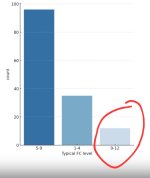Thanks to everyone who took time to participate in this survey. The fiberglass pool industry has grown significantly over the past couple decades, so we felt compelled to reach-out to members in an effort to gather as much data as possible about their pool's condition. TFP did its best to compile, analyze, and validate the information provided, and how automated information tools presented the information below. As with any survey, there are potential variances in it accuracy, but we feel that the data obtained is valuable to the community and helps to shed a little more light on fiberglass pools, specifically gelcoats, and how their conditions may or may not be impacted by time, chemicals, etc.

The comprehensive survey on fiberglass pool conditions, with responses from a total of 169 submittals, provides key insights into the factors influencing gelcoat conditions.
- General Observations:
- A significant majority of respondents, 95 out of 169, reported that their pool's gelcoat remains unchanged. This suggests that, for many pool owners, the gelcoat remains durable and resilient over time.
- Most of the pools with unchanged gelcoats are relatively new, with 84 out of 95 being fairly recent installations or recoats. Only 11 of these 95 pools were from 2016 or older.
- Age as a Determining Factor:
- Age seems to play a pivotal role in the condition of the gelcoat. A discernible pattern emerges when looking at specific gelcoat conditions:
- For those with faded/embedded gelcoat, half (7 out of 14) were in pools manufactured before 2020.
- Chalkiness that wipes off was predominantly seen in older pools. 7 out of 11 were manufactured before 2010, with 3 others before 2020.
- Blisters and flaking-peeling, though less frequent, were observed predominantly in pools made in 2022, but also appeared in pools from 1996 and 2000.
- The combined category of discolored, faded, chalky, and rough gelcoat conditions showed that 4 out of 9 were from pools manufactured in 2006 or earlier.
- Other Influencing Factors:
- Chlorination Method: Salt water pools were predominant, especially among those with altered gelcoat conditions. For instance, 10 out of 14 pools with faded/embedded gelcoat and 7 out of 9 with discolored/faded conditions were salt pools.
- Chlorine Levels: Free chlorine (FC) levels also showed variability among different gelcoat conditions. For faded/embedded gelcoats, most maintained an FC level in the 5-9 ppm range. For those with chalkiness, the majority also had FC levels in the 5-9 ppm range.
- Covers: The use of pool covers was mixed across different conditions. For instance, 4 out of 14 pools with faded/embedded gelcoat used covers, while only 3 out of 11 with chalkiness used covers. Interestingly, 4 out of 5 pools with blisters or flaking-peeling conditions used covers.
In conclusion, while the majority of fiberglass pool owners reported satisfactory gelcoat conditions, age emerged as a significant factor influencing gelcoat deterioration. Older pools, especially those manufactured before 2010, showed a higher propensity for altered gelcoat conditions. Other factors like chlorination method, chlorine levels, and the use of covers also played roles, but age remained the predominant determinant. Future pool owners and manufacturers should consider these findings in pool design, maintenance, and customer education to ensure the longevity and aesthetic appeal of fiberglass pools.



